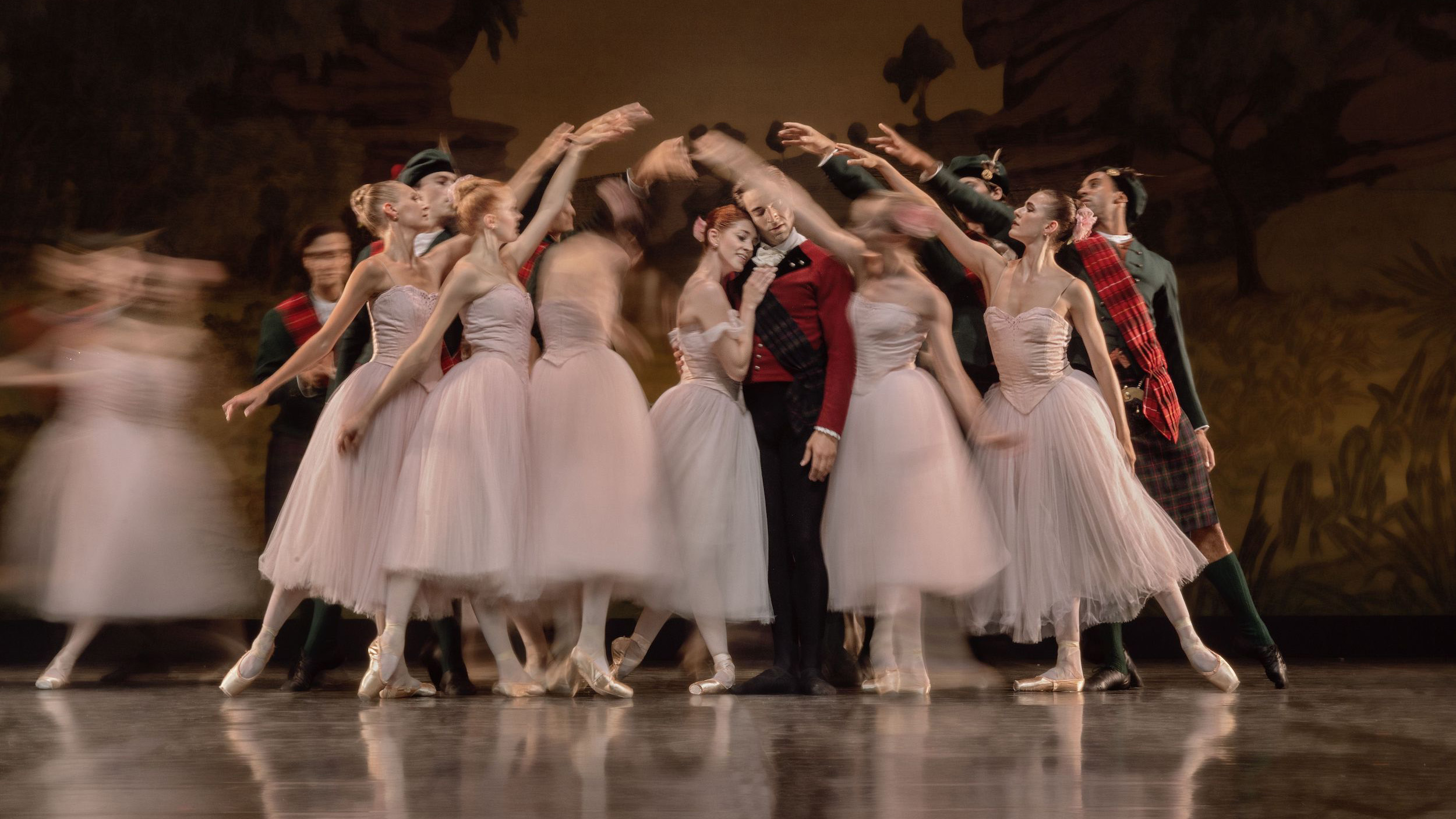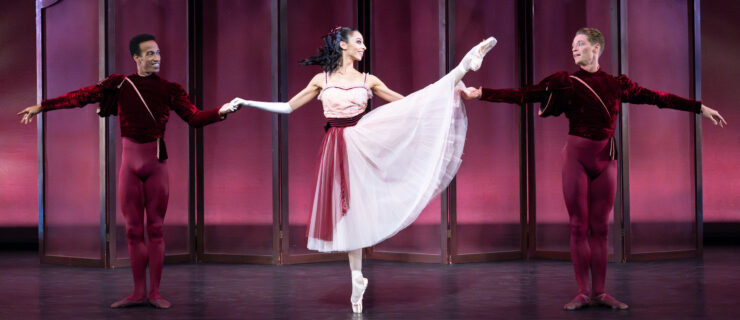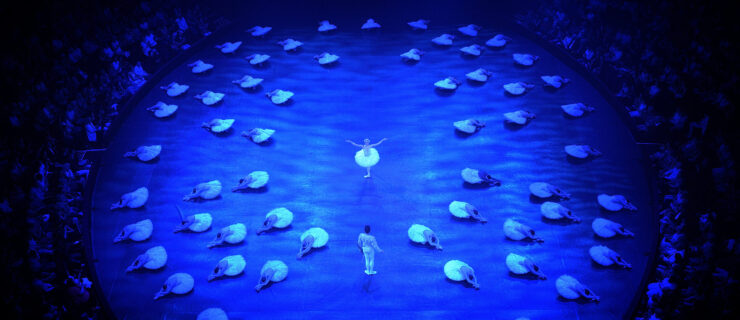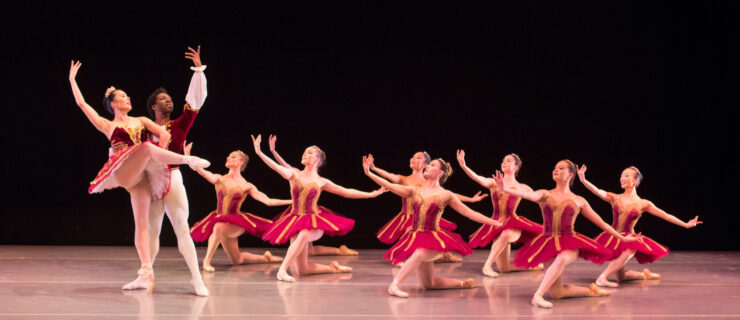Royal Danish Ballet Merges Past With Present
Midway through Harald Lander’s one-act ballet Etudes, part of the Royal Danish Ballet’s Giant Steps mixed-bill this season, a ballerina wearing a white, romantic tutu enters the Old Stage at the Royal Danish Theatre. The corps, which has been demonstrating classroom steps, disperses as she performs delicate and understated choreography: skimming bourrées, lilting port de bras, and carefully placed walks on pointe. Both her carriage and costume are reminiscent of the Sylph’s in August Bournonville’s La Sylphide (1836).

This solo within Lander’s homage to classical ballet training, which premiered in Copenhagen in 1948, represents the Royal Danish Ballet’s long lineage in the Romantic ballet tradition. After the company’s founding in 1748, the choreographer August Bournonville served as ballet master from 1830 to 1877 (with a few brief interims). He put his stamp on Romantic ballet with a distinctly Danish style of dancing, marked by precise footwork and a generous, easy grace. Many of Bournonville’s ballets, including La Sylphide, Napoli, and A Folk Tale, continue to be performed today, and feature stories about human nature rather than lofty displays of royalty. Lander’s Etudes weaves this lineage into the choreography as a matter of fact.
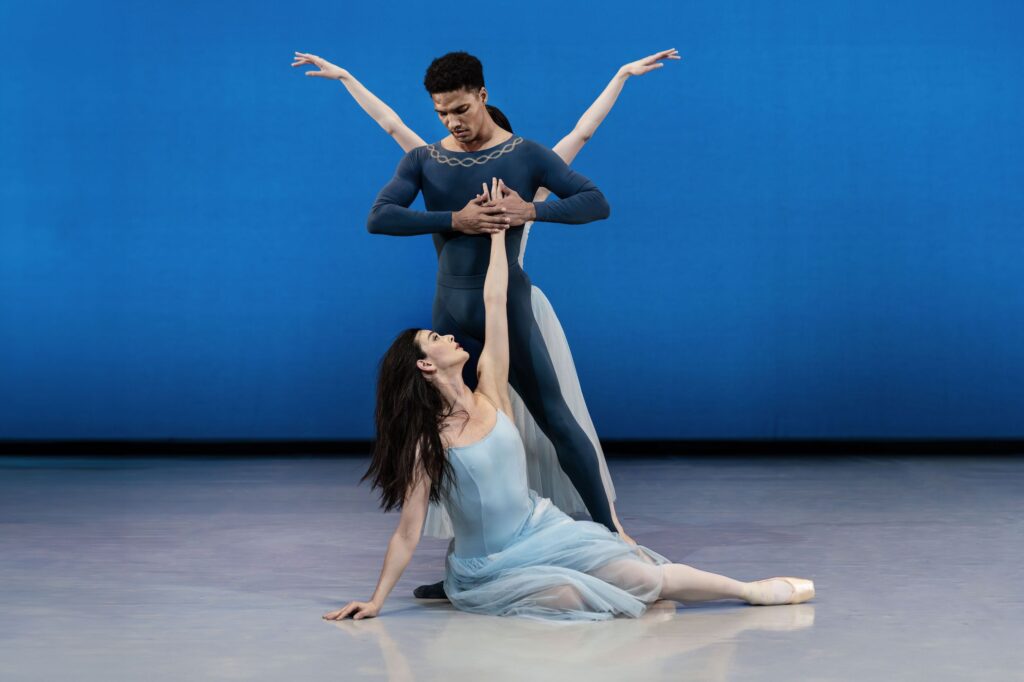
Today, the Royal Danish Ballet remains a cornerstone of Bournonville repertory, aiming to present enlivened stagings of his major full-length works. “For anything to stay the same, everything has to change,” says artistic director Nikolaj Hübbe, who has led the company since 2008. “To stage Bournonville today, I ask: What does this ballet say today? I do this with great respect. I don’t want to knock the pedestal, but I look to identify the point of interest for today’s audience.” For Hübbe, this has meant re-spinning references to religion in his stagings, as well as pointing out contemporary parallels through art, film, and literature; his staging of Napoli, for instance, takes place in a Fellini-inspired 1950s Italy.
From a dancer’s perspective, portraying the style of the company’s historic repertoire is also a matter of finding relevant comparisons. Principal dancer Holly Dorger, who joined the company from the School of American Ballet in 2008, looks for honest, real emotions to access Bournonville’s ballets. “I remember seeing this picture of Princess Diana where her head is turned downward, but she’s looking up at the camera. That’s the kind of image I think of when dancing Bournonville. I don’t give everything. I hold back a little.” The same goes for the romantic solo in Lander’s Etudes: “I turn my focus inward first, moving for myself, then offer the gesture to the public,” she says. “It’s this beautifully honest exchange between me and them.”
Beyond historic works, the company’s repertoire features a full spectrum of choreographers. Balanchine ballets are a staple, for instance. Hübbe, who was a principal dancer with New York City Ballet for 17 years, points out the parallels that the Balanchine and Bournonville styles share. “Physically, they are different. But musically, and rhythmically, I think Balanchine and Bournonville share something,” Hübbe says. “The speedy legs, the crisp feet—the clarity of the lower legs. Repertory-wise, they complement each other.”
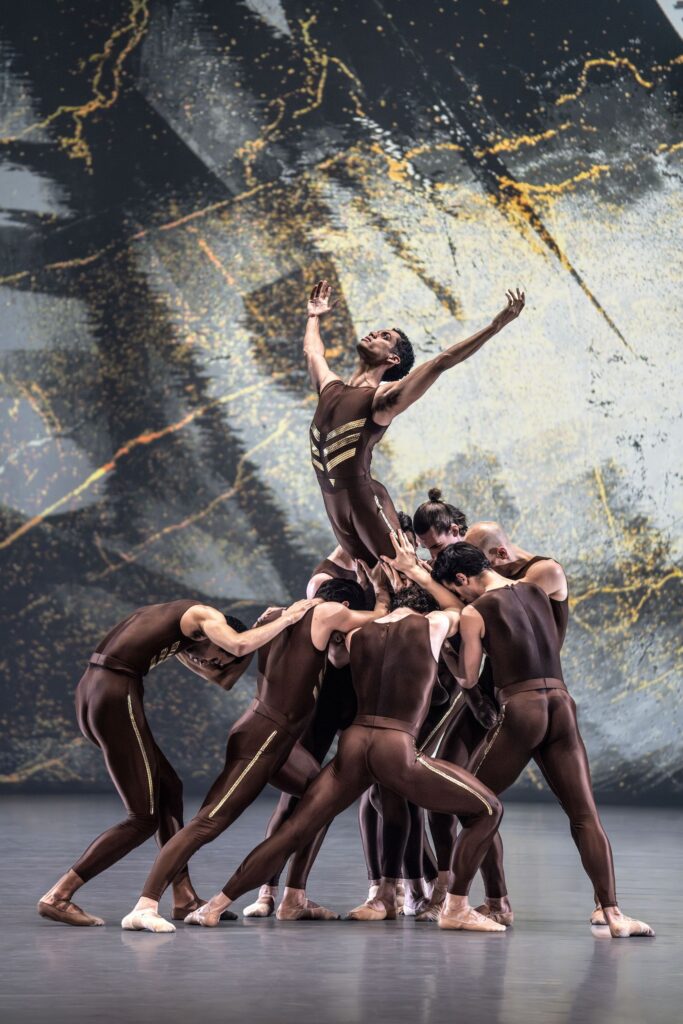
Repertoire highlights also include works by Danes like Harald Lander, Flemming Flindt, and Sebastian Kloborg, as well as international voices such as Jorma Elo, Wayne McGregor, Sharon Eyal, Gregory Dean, and Christopher Wheeldon. Overall, with 11 programs per season consisting of full-length classical works, mixed bills, and new creations, the company’s 84 dancers have a staggering amount of stage time.
With artists’ high salaries and pension plans, it’s no wonder that dancer morale is high in Copenhagen. RDB is open to company members taking a leave of absence to expand their creative horizons; they can apply to participate in projects or even work with another company for a set period. Sebastian Pico Haynes, who joined Royal Danish Ballet straight out of school, considers the time he spent with Nederlands Dans Theater I in Amsterdam as a way of owning his decision to be in Copenhagen. “I grew up performing in Bournonville productions as a kid. I’ve been the lemonade seller, the drummer, the fisherman. I knew that there’s this whole world out there, and I wanted to dig into something new,” he says.
Now back at Royal Danish Ballet, Haynes continues to explore through the creative process, and the company has long provided opportunities. For instance, Corpus, the company’s experimental dance lab, ran from 2012 until 2021. (A project highlight in 2016 was the collaborative performance UROPA, where dancers performed alongside asylum seekers, who told their stories from their own perspectives.) Koreorama is RDB’s more recent developmental project established to nurture emerging choreographers within the company, offering workshops and other resources to expand dancemakers’ creative horizons. This spring, Koreorama presents works on the main stage by choreographers Tobias Praetorius, Tara Schaufuss, and Matteo Di Loreto. For Haynes, ballets like these are a constant source of inspiration. “Dancing in new works keeps my curiosity going,” he says. “I’m always finding new tools, and new ways of applying them.”
The company’s two-century-spanning repertoire proves just how versatile Royal Danish Ballet’s dancers are. “I’m so amazed at how adaptable they are today,” Hübbe says. “They’re just so capable. They’re like chameleons. Our dancers can do just about anything.”
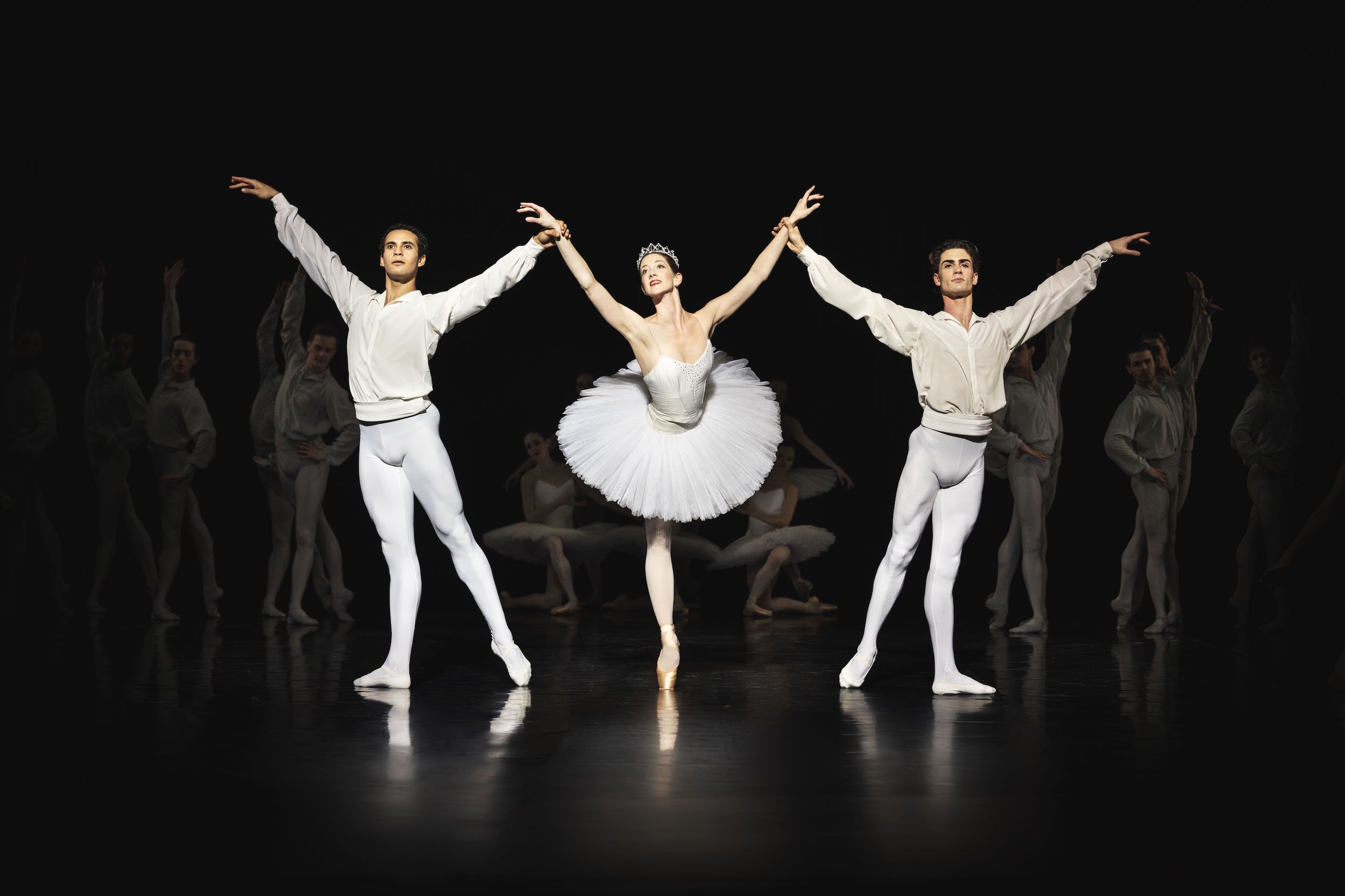
Royal Danish Ballet at a Glance
Number of dancers: 84, on average
Length of contract: Contracts run a full 12 months, with paid summer vacation and pension plan
Salary: A corps de ballet starting salary is 35,000 Danish kroner (approximately $5,100) per month, before taxes; pension is included
Union: Foreningen Den Kongelige Ballet
Performances per season: Approximately 130–140
Programs per season: 11 (full-lengths and triple bills), as well as occasional galas and special events
Website: kglteater.dk/en/about-us/arts/the-royal-danish-ballet
Audition Advice
Dancers join the company either through the Royal Danish Ballet School or by private audition (through video or in person). The school’s three-year apprentice program, open to EU citizens who are fluent in Danish, allows pre-professionals to perform regularly with the company while completing their high school academic education. On choosing dancers, Hübbe says: “I’m looking for people who apply themselves 100 percent. I like dancers who can move and take up space. Someone might be well placed at the barre, but if they can’t move, it doesn’t matter.”
